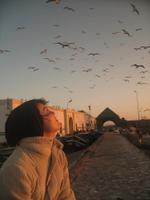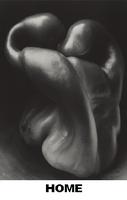Women Travellers

Dame Freya Stark
Off the Beaten Track
Centuries of Women Travellers
Women travelers of the past three centuries have amazing and varied tales to tell me of them were exceptional individuals who broke all the rules, while others traveled as dutiful wives, mothers or daughters. Journeying to distant parts of the world from the 1660s to the 1960s, before the age of mass travel, these women had experiences and encounters almost unthinkable today.
Victorian traveler Mary Kingsley, defended herself with a canoe paddle when a crocodile attempted to board her boat, and was saved only by the thickness of her skirt when she later fell into a pit of sharp stakes. Penelope Chetwode made a remarkable river crossing in India using the traditional method of floating across on an inflated animal hide, propelled by a local man on top of whom she was required to lie. Meanwhile Lady Hester Stanhope offered advice to respectable women on answering calls of nature whilst in the desert – one should take a chamber pot, a small tent, declare a coffee break, pitch the tent and gracefully retire.
This exhibition brings together 60 portraits, in all media, from the National Portrait Gallery’s collections, alongside photographs and paintings made by the women on their travels. It also features some of their finest souvenirs, now prized exhibits in major museums and private collections across Britain. The exhibition is organized geographically and ends with a selection of the world’s women who made Britain the destination for their travels, recording their presence here by visiting a fashionable society photographer.
Travellers to the Americas include Maria Callcott who traveled in Brazil in the 1820s. The exhibition presents a fine portrait of her by Sir Thomas Lawrence, and the album of botanical illustrations that she painted there. Fanny Kemble, the famous actress, had a very different experience of the United States when she discovered that her American husband’s money came from his slave plantations in Georgia. The marriage swiftly fell apart and her journal describing the plight of his slaves was published to further the cause of abolition.
Well known twentieth-century women travelers, Gertrude Bell and Freya Stark, both traveled in the Middle East and Arabia. Both were superb travel writers and took photographs. Freya Stark’s images of southern Yemen are displayed in the exhibition and are particularly beautiful. Bell lived in Baghdad, founding the Museum there, having been closely involved in the political and geographical decisions that created the modern state of Iraq. In the previous century, Jane Digby also chose to live in the Middle East. After a stormy divorce and many love affairs, she found her final husband in Syria, a Bedouin Sheikh young enough to be her son, and joined his tribe in the deserts around the ruined city of Palmyra, shown here in one of her watercolours.
Travellers to Africa include Amelia Edwards whose 1877 book, A Thousand Miles up the Nile, earned her enough to pay for archaeological excavations in Egypt. An Egyptian portrait sculpture that belonged to her is displayed in the exhibition, as is a marble sculpture of her. Also in this section are a selection of Mary Kingsley’s artifacts – a metre high Congolese nail figure, a newly discovered fish which was named after her, and the brown fur hat that she wore during her African journeys.
From the Far East and the Pacific come photographs of China taken in the 1890s by Isabella Bird on her journey up the Yangtze. She converted the cabin of her boat into a darkroom, washing the chemicals off her glass plate negatives in the river itself. In contrast, Annie Brassey chose to travel in a luxury yacht, The Sunbeam, collecting masks and other Pacific ethnographic items.
Women who made Britain their destination include Pocahontas, the American Indian woman who visited the court of King James I, Queen Emma of Hawaii who stayed with Queen Victoria, Sarah Davies, a young African slave who became Queen Victoria’s goddaughter and Nehru’s sister, Mrs. Vijaya Lakshmi Pandit who was India’s High Commissioner to Britain and the first woman President of the United Nations.
The exhibition is curated by Clare Gittings, Education Officer at the National Portrait Gallery and curator of Escape to Eden: Five Centuries of Women and Gardens (2000)
At the Porter Gallery July 7th to October 31st, 2004
Off the Beaten Track
Three Centuries of Women Travellers
The BOOK
by Dea Birkett
with Foreword by Jan Morris
Published July 7 2004
Off the Beaten Track takes us on an exhilarating journey through three centuries of travel, in the company of such women voyagers as Lady Mary Wortley Montagu, Vita Sackville-West, Isabella Bird and Freya Stark. Not only did women from Britain travel to the Americas, Russia and Turkey, Arabia and the Middle East, Africa and South East Asia but women from all corners of the globe also visited Britain. This book records their experiences – where they went, what they looked like, how they evoked other lands and cultures in words and images, and what they brought back with them.
The common link between these women travelers is that their lives are celebrated in the National Portrait Gallery collections. While they all traveled for different reasons, collectively they illuminate Britain’s relationship with other cultures and challenge assumptions about women’s achievements.
Dea Birkett is a distinguished broadcaster and writer. Winner of the Somerset Maugham Award, she has also been short listed for the Thomas Cook Travel Book Award. She is author of several books including Mary Kingsley and Serpent In Paradise, as well as being the co-editor of the best selling Amazonian: The Penguin Book of Women’s New Travel Writing.
Jan Morris’s many books include works of history, travel biography and fiction, and she has traveled herself in many parts of the world during a half-century’s literary career.
Ed. Note: We are grateful to the National Portrait Gallery for providing this article for the enjoyment of our viewers.



0 Comments:
Post a Comment
<< Home